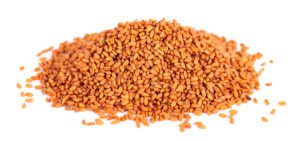Syngenta Seeds and Sustainable Oils agree to sell camelina seed

The collaboration reflects Syngenta’s strong commitment to enabling farmers to economically adopt regenerative practices around the world.
Camelina can be planted on fallow land or land left idle between crop cycles. It is valued for its low water usage, quick maturity, and resilient yields.
By offering farmers a new cash crop in high demand, the commercial partnership promotes a more diverse and resilient agricultural system.
“The collaboration of Syngenta Seeds and Sustainable Oils to sell camelina seed for use in sustainable aviation fuel, renewable diesel, and animal feed production is a significant step forward in promoting regenerative agriculture and renewable energy,” said Eric Boeck, regional director North America for Syngenta Seeds.
“By supporting farmers and offering a sustainable source of fuel and animal feed, this partnership represents a win-win for producers, the environment, and the rural economy. It embodies our commitment to sustainability and our drive to bring innovative solutions to market.”
“We are very excited to partner with Syngenta Seeds on this collaboration to expand camelina’s growth in the US,” Sustainable Oils president Mike Karst said. “Camelina represents a key feedstock for the production of renewable fuels and sustainable aviation fuel. It is a remarkable crop that protects like a cover crop and pays like a cash crop.”
Camelina seed will be sold through Syngenta’s AgriPro® dealer network in a vertical marketing model. Farmers who buy camelina seed will have a harvest purchase contract. Camelina seed will be marketed in select areas of Western Kansas, Colorado, Montana and the Pacific Northwest.
It can be included as a spring crop in a wheat-fallow rotation in Montana and the Pacific Northwest, and as a winter crop in Kansas and Colorado.













